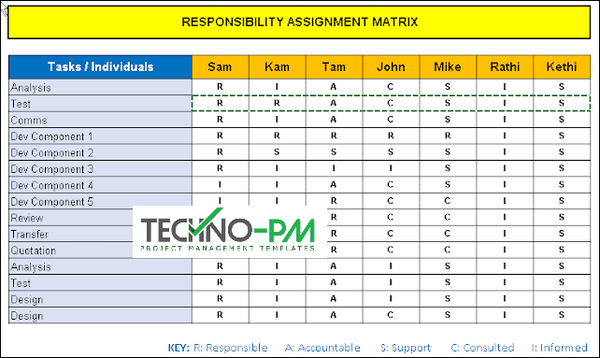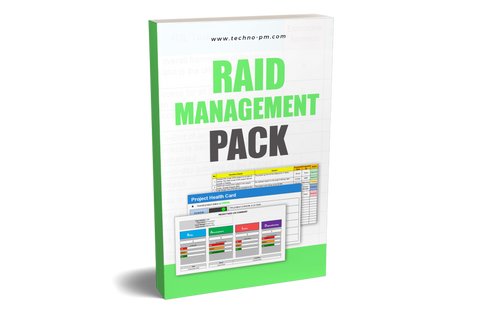What is RASCI Model ? Download RASCI Template Excel
What is RASCI and Responsibility Assignment Matrix?
A RASCI Chart is a key ingredient in the toolkit of any project manager. RASCI is one of the most well-known variants of a responsibility assignment matrix whose main purpose is, as the name suggests, to assign responsibilities in a project or process,0 in this way ensuring that all involved are aware of what is expected of them.

RASCI
Is an acronym (you may have noticed already how much we love acronyms in the world of project management!) that stands for:
- R: Responsible – this is the doer, the individual responsible for creating a deliverable or performing a task.
- A: Accountable – this is where the buck stops, aka person whose head will roll if things don’t work out as they should.
- S: Support – this represents support elements that are not responsible but will help when needed.
- C: Consulted – this is someone who will either provide inputs, endorse or advise on a certain task or deliverable.
- I: Informed – this is an individual who needs to be kept in the loop, FYI-style.
How To Create a RASCI Chart?
A RASCI Chart is very easy to create, and that’s why you should definitely have one in your project (did I mention the great set of benefits of having one?). The Chart combines information from your Work Breakdown Structure (your deliverable and/or tasks) with information from your Organizational Breakdown Structure (the individuals or roles that are part of the project):
- Using verbs for activities and nouns for the deliverable, list in the vertical all the activities, processes, or deliverable to each you intend to assign responsibilities to, one per row.
- In the horizontal, one per column, list the roles or names of the project's individuals.
- Put the related letter of the responsibility (R, A, S, C, or I) you want to assign in the cell where activities intersect a role or a name.
However, even better than building your own RASCI from scratch is using the template we developed just for you, ready to be used in the next worksheet!
RASCI vs RACI Differences
While RASCI is a renowned model, you may have also heard of its sibling RACI. RACI is equally useful as a tool; however, it doesn’t contain the Supporters' role, leaving it to the Responsible to identify whom to ask for support. While both models can prove beneficial, there are advantages in using RASCI for large or complex projects involving a wider project team. When a crowd is brought together, it is easy to get confused and even lost regarding responsibilities; thus, having the role of
Supporters in your matrix may help you bring clarity to the group. The responsibility-assignment-matrix-family is a vast one, and you will certainly find alternative models, such as the brother RACI-VS (verifier and sign-off), the cousin PARIS (perform, accountable, control, suggest, informed), the aunty DACI (driver, approver, contributor, informed) or the grumpy old uncle CAIRO, who closely resembles RACI but has an additional responsibility, “omitted” or “out of the loop.”
Best Practices When Creating a RASCI Chart
A couple of best practices to check for when using a RASCI Chart are:
- Each activity/deliverable should have one (1) and only one accountable (A)
- Activities/deliverables can have more than one responsible (R)
- Beware of columns with no empty cells; it means there are individuals with too much work assigned to them.
- Beware of columns full of Accountable (A), as you may want to delegate authority to others instead of giving that burden (sorry, meant power!) to a single individual.
- Beware of activities/deliverables with too many people to be Consulted (C) since this can slow down the work.
- Present the RASCI Chart at the kick-off meeting, don’t wait until it’s too late.
- Ensure that people are happy with the RASCI Chart and have agreed to it.




